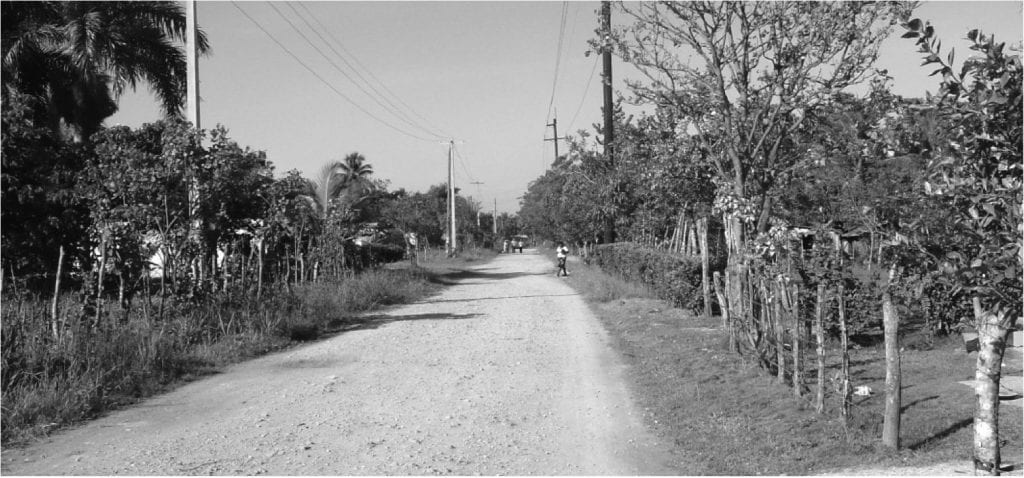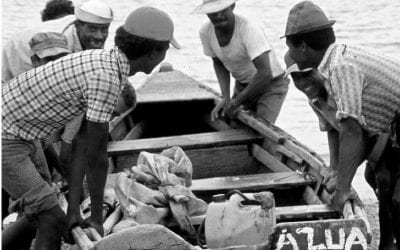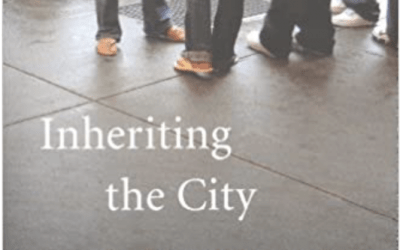The True Impact of the Peace Corps
Returning from the Dominican Republic ’03-’05

A photo of the street that ran in front of Molly Coeling’s house in el Peje de Guerra in the Dominican Republic. Photo by Molly Coeling
I am an RPCV: a Returned Peace Corps Volunteer. For me the Peace Corps was an intense life experience, above anything else. As I continue to reflect on it, I am struck with the many and varied ways in which it continues to affect my life.
As a PCV in the Dominican Republic from September 2003 to November 2005, I lived, worked, and learned in a small sugar cane-dependent community two hours outside of Santo Domingo, the capital city. As a health volunteer, I focused primarily on nutrition education and a vegetable-gardening project.
By the time I returned to the United States, I could speak Spanish fluently and understood Dominican culture, concrete skills that helped me secure the position and succeed as a Health Educator in low-income housing developments in Boston. From the first interview, I realized that success in this job with Harvard School of Public Health faculty at the Dana-Farber Cancer Institute would be the result of my experience as a PCV, building upon my formal education, which included a Master’s in Public Health.
I continue to work in the same department at Dana-Farber today, having moved into project management roles over the past three years. I now rarely use the language and cultural skills that I was hired for but have come to recognize that I learned so much more than Spanish and the basics of grassroots development. I also learned how to work within a community setting and how to see a project through from an idea to its completion. I know that actively engaging participants and maintaining morale and getting [ed:word missing here]at all levels is crucial for any project, whether it be introducing Dominican women to new ways of cooking, or continuing to reach out to groups of Americans who are marginalized by our society and at higher risk for cancer.
From the Peace Corps, I know I can not only survive but thrive anywhere, whether as an American woman in a small Dominican village or as a Midwesterner living in the Northeast. I know how to adapt, how to put things into perspective, how to take a risk, and how to maintain a sense of humor through it all. I can help a woman on the subway who doesn’t understand how to pay and can’t speak enough English to ask, and I can do so with empathy and respect. I can respond to a Dominican neighbor who insists that all Americans are rich, just as I can respond to an American neighbor who insists that immigrants should not be welcomed here. I can understand ignorance and intolerance not only as American shortcomings but as human phenomena. I can understand that people are the same; it is the circumstances that vary.
In these ways and countless others, the Peace Corps has a lasting and widespread impact on all RPCVs in their work and in their lives.
Winter 2009, Volume VIII, Number 2
Related Articles
Editor’s Letter: The Sixties
When I first started working on this ReVista issue on Colombia, I thought of dedicating it to the memory of someone who had died. Murdered newspaper editor Guillermo Cano had been my entrée into Colombia when I won an Inter American Press Association fellowship in 1977. Others—journalist Penny Lernoux and photographer Richard Cross—had also committed much of their lives to Colombia, although their untimely deaths were …
In the Shadow of JFK: One Peace Corps Experience
I am often asked about the Peace Corps by students and recent graduates. The most frequent questions are, “why join?”, “what did you do?”, and “what has it meant for your career?” Here is my story. My earliest recollection of international curiosity was in the fourth grade when Sister Margaret Thomas described her experience as a recently returned missionary in Bangladesh. In high school, my sister Mary went to Peru on …
A Review of Inheriting the City: The Children of Immigrants Come of Age
As an immigrant trying to understand urban diversity here, I come back time and again to the U.S. writer E.B. White’s often-cited passage in Here is New York (1948) in search of useful clues. “There are roughly three New Yorks. There is, first, the New York of the man or woman who was born there, who takes the city for granted and accepts its size, its turbulence as natural and inevitable. Second, there is the New York of the …



